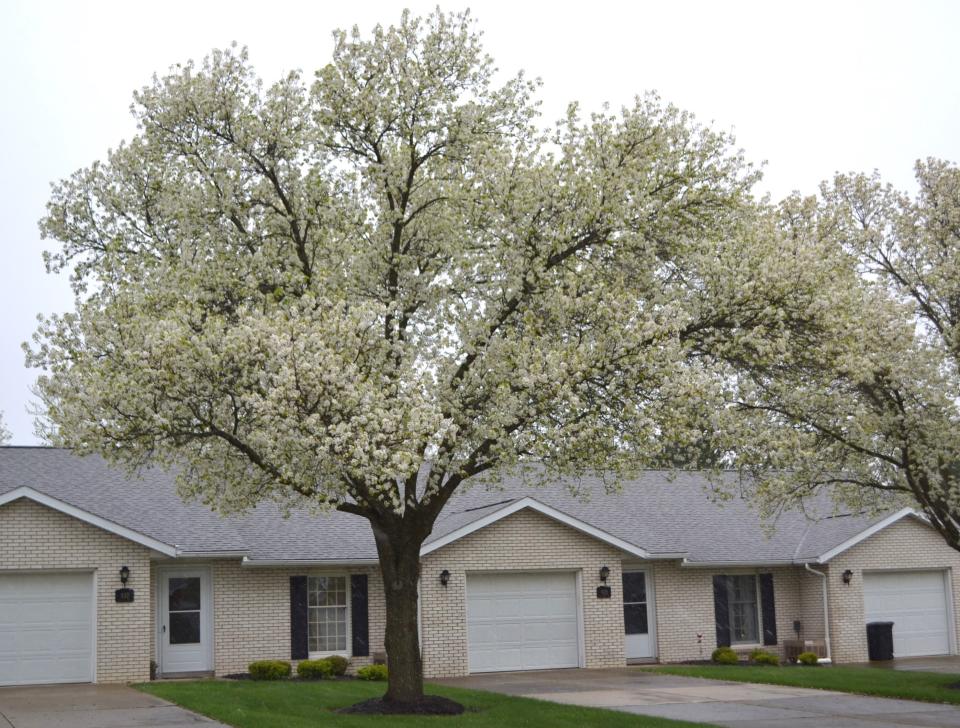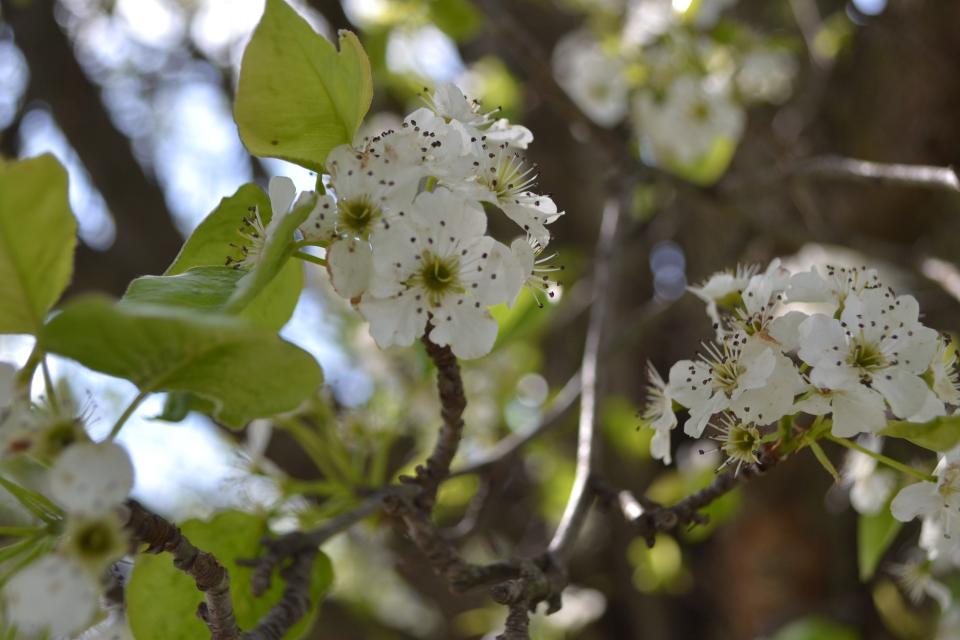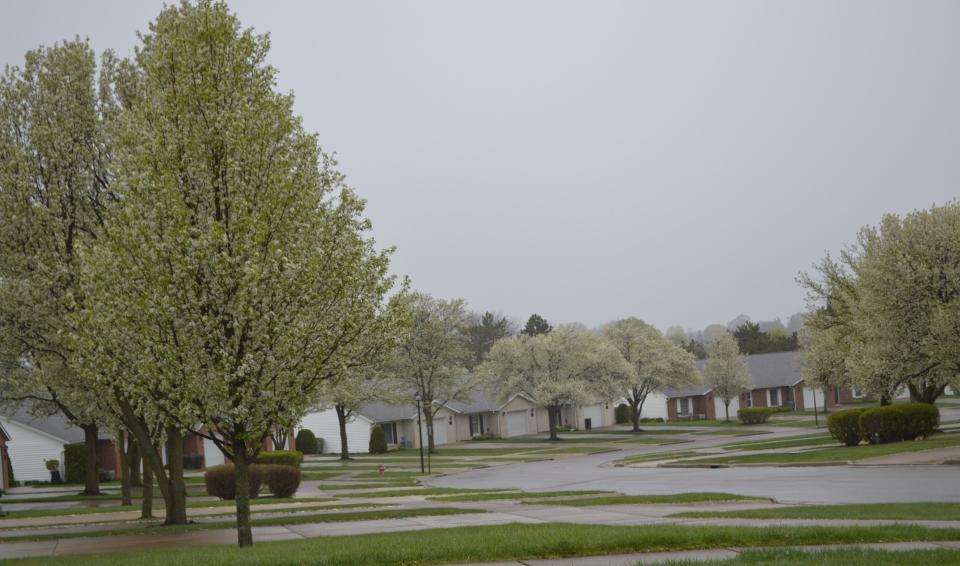A Stroll Through the Garden: The invasive Callery pear
This past week I was riding to Columbus with a friend who gave me a chance to get a lens that will help with my closeups. What I saw through the van window was all of these white-flowered trees in bloom. I recalled the article I wrote last year about this white-flowered tree and another friend’s question about the white-blooming trees that smelled so bad.
It seems our white flowering tree has dominated some neighborhoods, and highways also are infested with this invader. There are a number of flowers with white blooms this time of year, but only one has reached the point of being a noxious weed so far.
I talked with Frank Klenovich of the Wayne County OSU Extension Office and found out the state is doing its best to get Callery pear out of our landscapes and prohibiting the sale of new plants. Klenovich wrote we are having an exponential rise in Callery pear trees overpowering native landscapes, which is igniting the conversation of removing existing colonies of this invasive weed tree.
According to the Ohio Department of Natural Resources, there is no requirement for the removal of existing plants, but the Division of Forestry encourages control and removal to benefit native forest ecosystems. As the pears are removed, we need to replace them with native trees. Email me a request for a list of trees that can replace this invasive species so we don't get another. Nature hates a vacuum.
Callery pear's beauty is deceptive

Last year I described how I learned about the Callery pear. Personally, I liked this Bradford pear or one of the newer cultivars called the "Cleveland Select" or Chanticleer pear. The color was great and came on early in the year. I even designed some of these newer varieties for some of my client’s yards as a specimen tree. I also could plant this tree without fear the soil was terrible and would still do well covering my warranty.
The purple leaves in the fall, white flowers in the spring, and its natural pyramidal shape caused me to use this as a specimen tree regularly. As the trees would grow the branches would remove the pyramidal shape and become more rounded. Weaker crotches would become more pronounced.
I felt it was basically a low maintenance tree and resistant to diseases and insects that crab apples would get. Another challenge when you're near a Callery pear and it's not windy is the smell. The tree's scents have been compared to rotting fish, urine and baby poop. Just remember that there is usually a great deal of wind this time of year thankfully.

In 1908, Bradford Callery pear or Pyrus calleryana "Bradford" was brought to the U.S. to breed fire-blight out of the normal fruiting trees from Korea and China. In 1977, Michael Dirr, author of “Manual of Woody Landscape Plants” or the landscapers' Bible, expressed how he felt we all should be using more Bradford pears in the landscape. We all may have listened. I did and I liked it.
In the 1960s, the Callery pear was promoted as a sterile hybrid, inexpensive, fast growing, transporting well, specimen tree. The smaller cultivars that came along later were said by plant scientists to have bred out the weak branch structure. What was hoped for was that these pears would not self-pollinate, but they could reproduce with another variety of the calleryana species, which made them very productive. We shall find them in many locations all over the area not planted by humans.
A weak and invasive tree
Here is where the problems start to really appear. Because the flowers come on so early, they overtake the resources from surrounding native species. One of the things that I have always liked was that the canopy of the Bradford pear was dense, which is also the problem in that nothing growing under the tree has a chance of surviving. If they have a chance at reproducing − and they do prolifically − they tend to dominate smaller lots if the lot is no longer being mowed.
Mother birds that are looking for soft-bodied insects like caterpillars for their young won’t find them. Being a non-native plant, stinky insects have no appetite for this tree and nothing to eat. We won’t find many birds staying in these trees, but the fruit is something birds eat and will spread far and wide. There are white spots growing in many woods this time of year where Bradford pears have been transplanted by birds and may be able to persist.

In January 2018, Bradford pears were placed on the invasive species list in Ohio, and in-state nurseries and landscapers were told to phase out selling the tree. On Jan. 7, 2023, it became illegal to sell flowering Callery pears in Ohio, which means we should not find Callery pears in any in-state nursery for sale. This is the case for the most part. If you were to place orders on the internet, you could still probably get them.
Lots of plants are in bloom this time of year. If you have any challenges in your yard, let me know and I shall do the best I can to help at ericlarson546@yahoo.com. Thank you for participating in our column. I shall place this column as a blog on my website at ohiohealthyfoodcooperative.org.
Eric Larson of Jeromesville is a veteran landscaper and gardening enthusiast and a founding board member of the Ohio Chapter of Association of Professional Landscape Designers.
This article originally appeared on Mansfield News Journal: Callery pear trees remain a problem in Ohio

